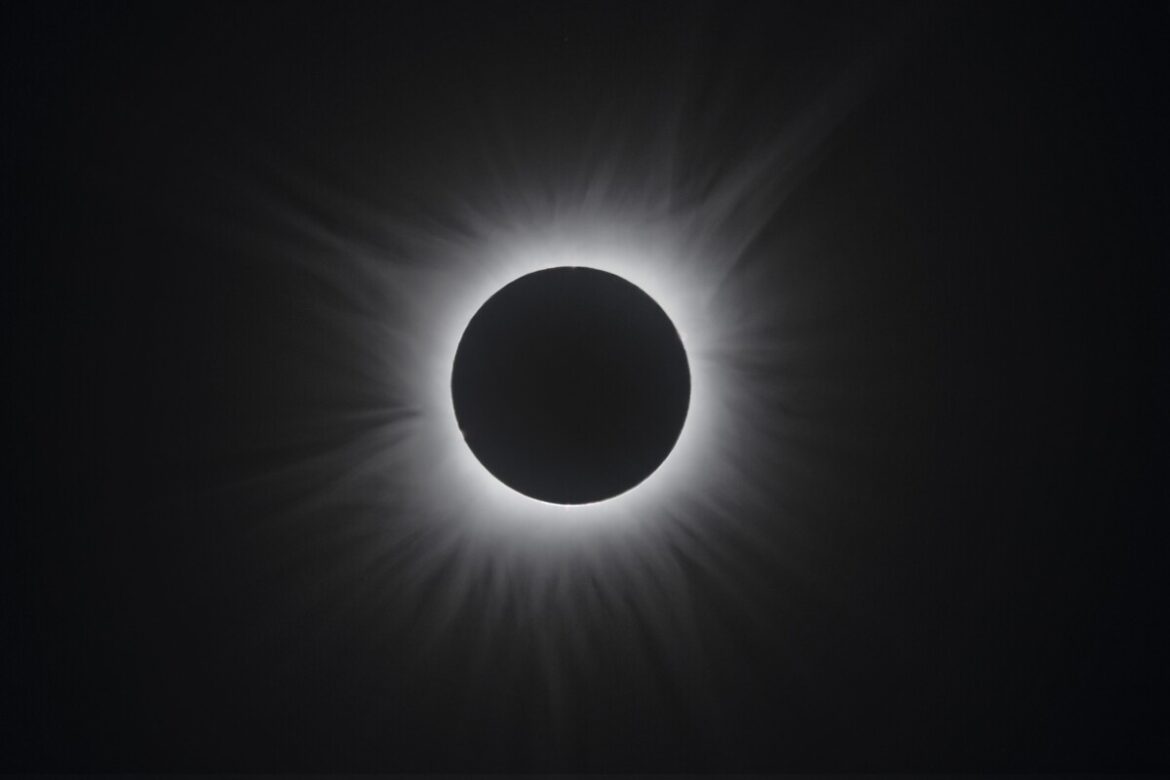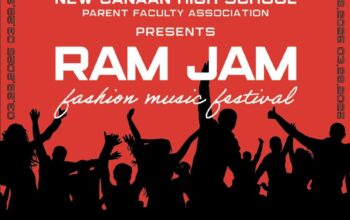Valentina Baldini, Reporter
On April 8 hundreds of people gathered at Waveny Park to watch the first solar eclipse visible to the East Coast since 2017. Spectators gathered together to watch the solar eclipse on April 8, at 3:30 PM. New Canaan experienced 92% totality, the most of any eclipse visible in town since 1925.
Solar eclipses are when the Moon comes between the Earth and Sun, blocking out the sun’s light. “During the brief moments of totality, the sky darkens, and the temperature drops, as if night has suddenly fallen,” said sophomore Michael Telesco, head of the astronomy club. “You’ll be able to observe the Sun’s brilliant corona, a fiery halo extending outward, as the Moon completely obscures the Sun’s face, creating a celestial spectacle that truly looks like a black hole has opened in the sky.”
Furthermore, solar eclipses are extremely rare. “They don’t occur very often, especially ones that are totality eclipses like we ran into,” Astronomy teacher Jeffrey Brentson said. “We had a few of them in the past twenty or so years, so now it’s going to be about another twenty-two years until the next one.”
The astronomy club helps members learn about astronomy and different science-related topics, including the most recent eclipse. They cover topics ranging from constellations and stars, to learning about the solar system, planets, and the galaxy. “ Make an impact by encouraging kids in the community to learn more about space and get excited by it, which is a rather unique opportunity at NCHS,” Michael said. “This allows students to actively participate in expanding their boundaries of knowledge by contributing to meaningful scientific efforts.”
Science department chair, Michael LeDuc, ensured that everyone at the high school had a memorable and safe time when viewing this past eclipse. “Every science teacher did a quick five minute talk about the eclipse during class so students were aware of what an eclipse is, how to stay safe when viewing it and understand how unique of an opportunity it was.” he said. “We also did some programming in the dome right after school on the day of the eclipse, April 8, so students could visualize it and see what to expect.”
Mr. LeDuc and the science department gave glasses out to students so they could stay safe and avoid damage to their eyes. “You can do some pretty serious, lasting damage to your eyes by viewing an eclipse without glasses. Regular sunglasses are not safe to look at the eclipse, so this was a way to make sure everyone was safe and had a great time.”
Solar eclipses are very rare occurrences, and through promoting proper safety measures, students and community members were able to safely watch the eclipse. “Rare events like this are a once in a lifetime opportunity, so we took advantage of it by staying safe and having a great time,” said Mr. Leduc.




